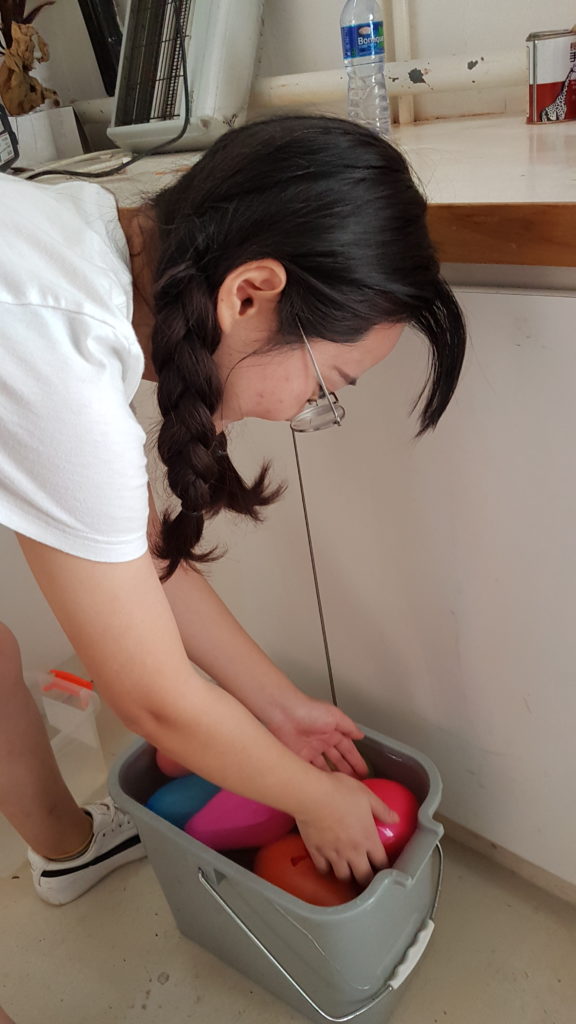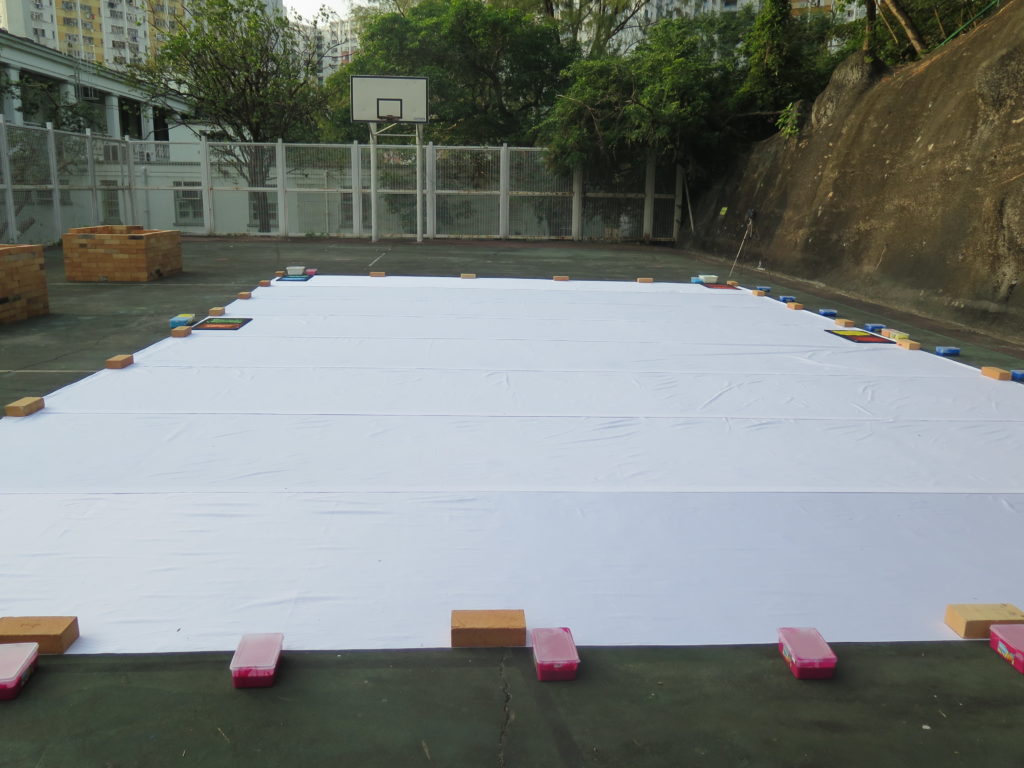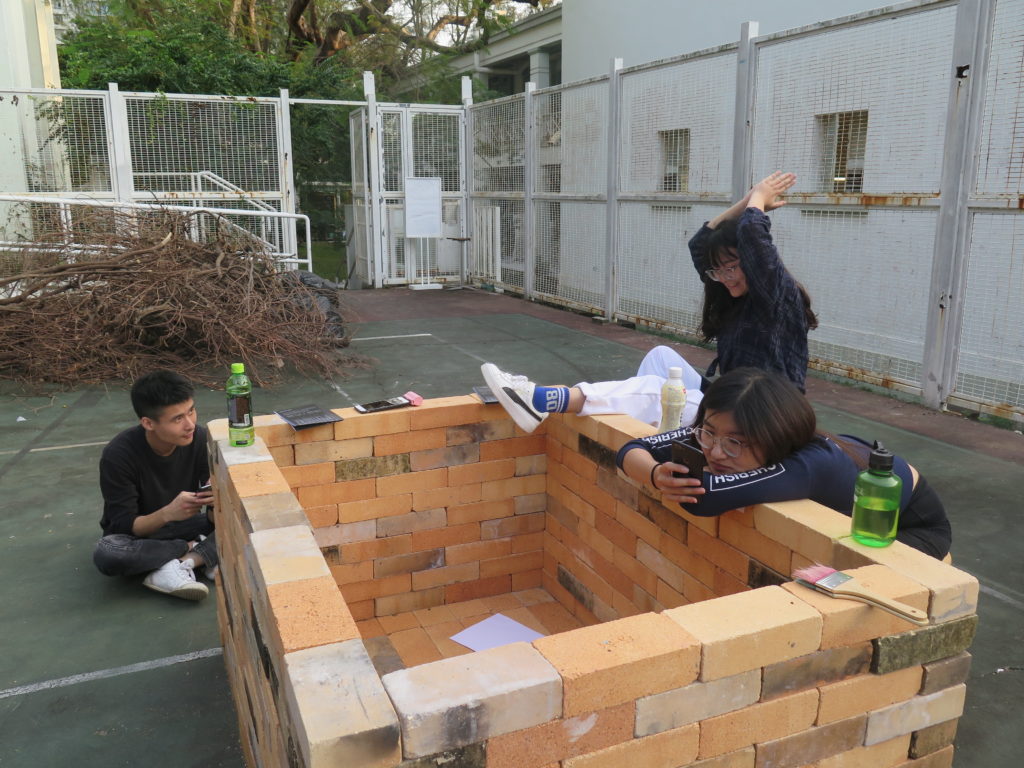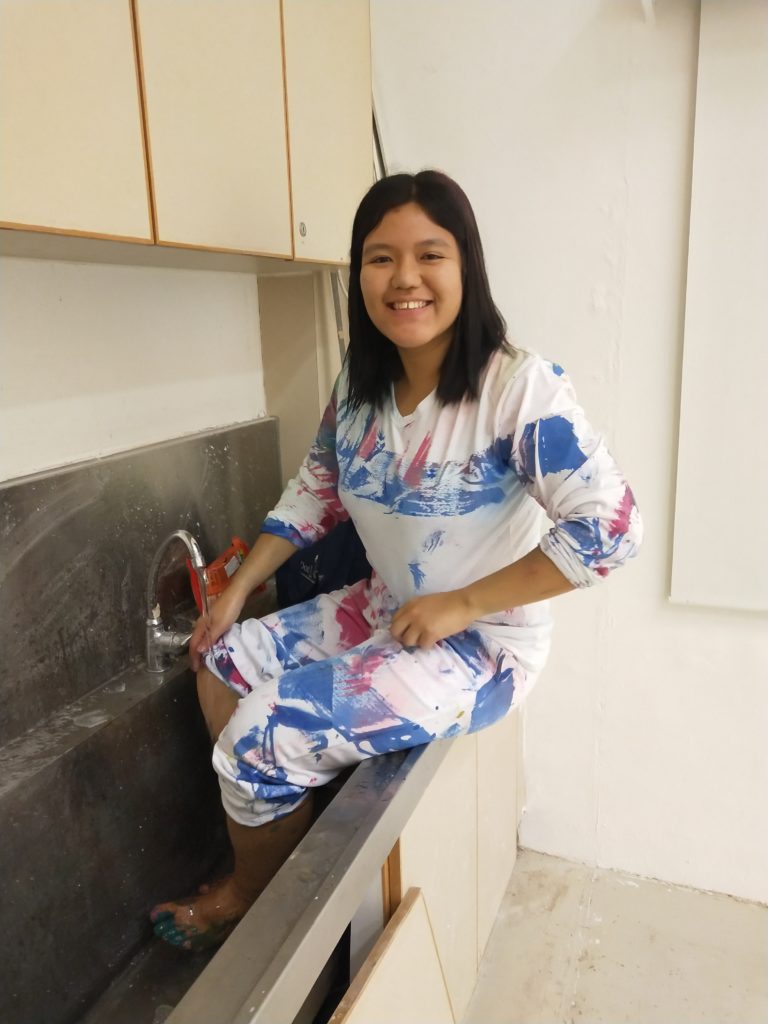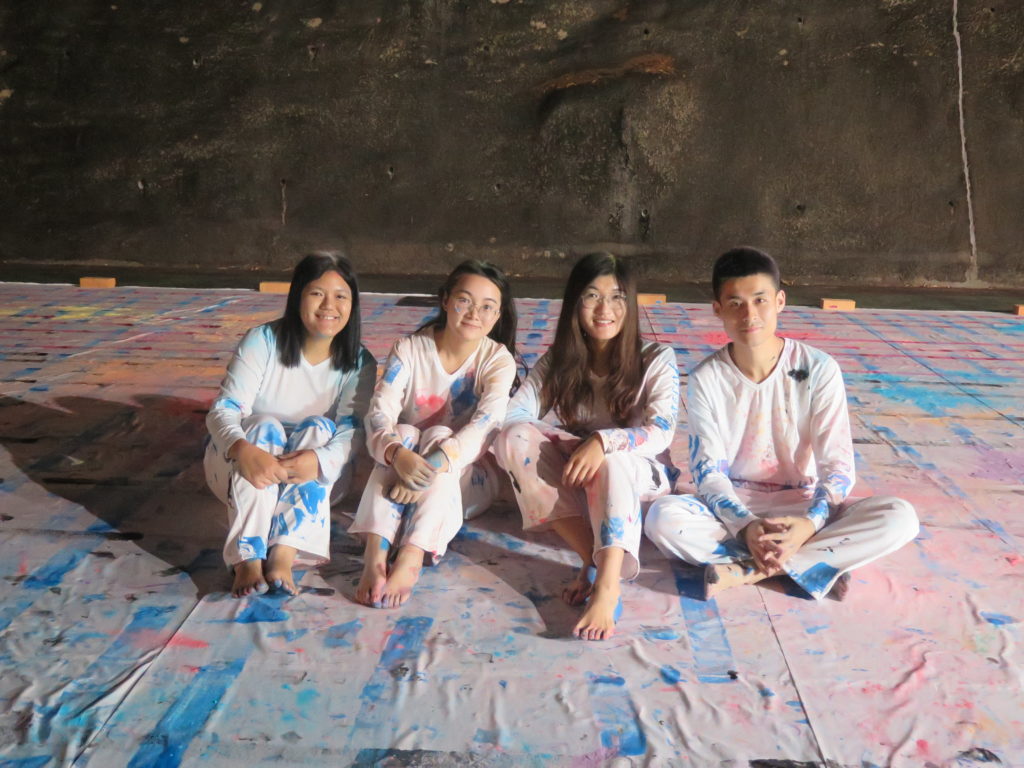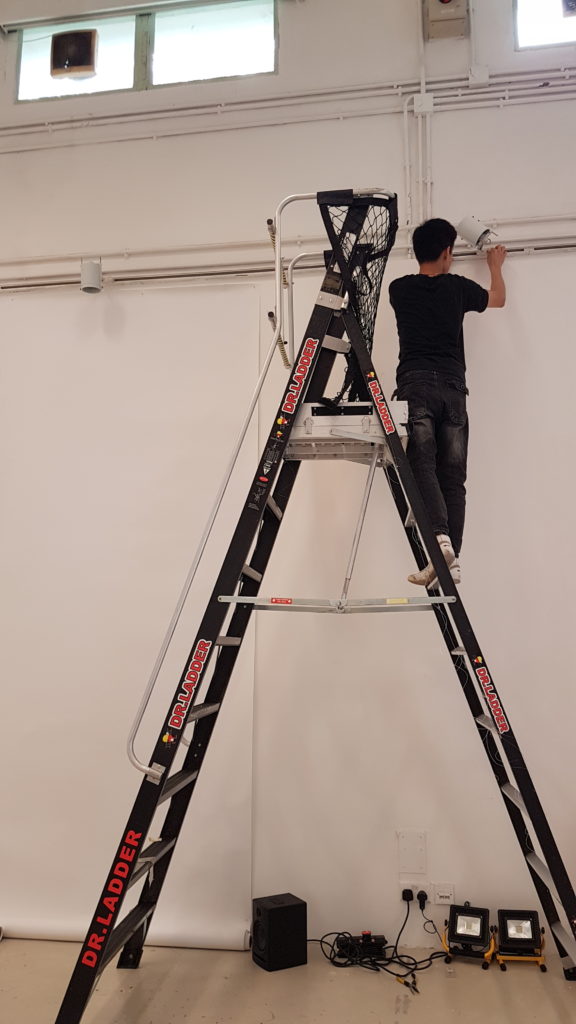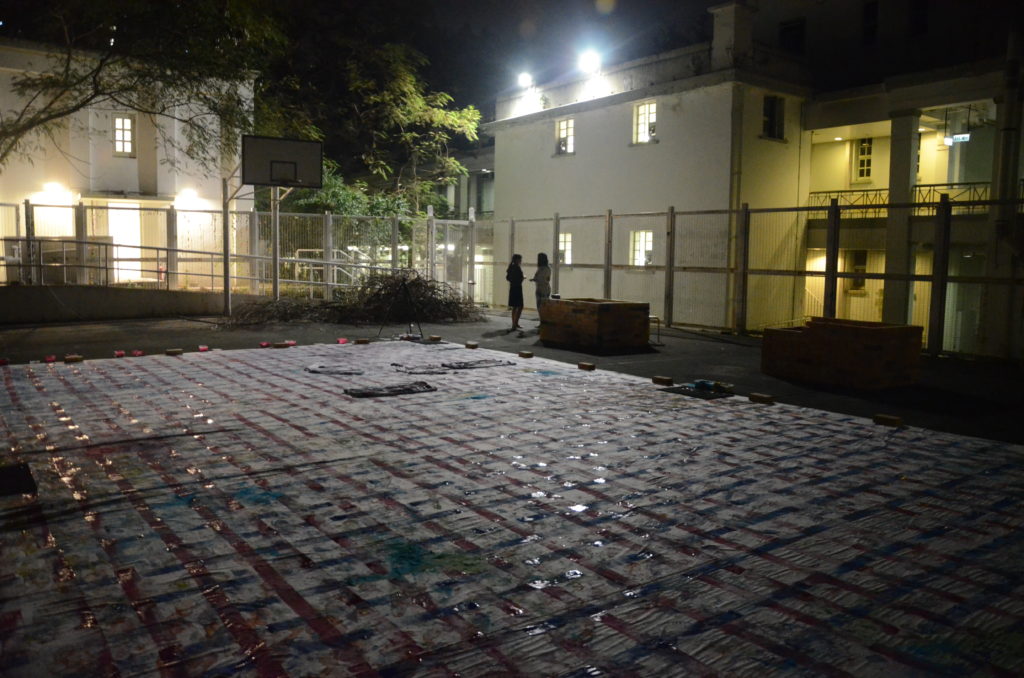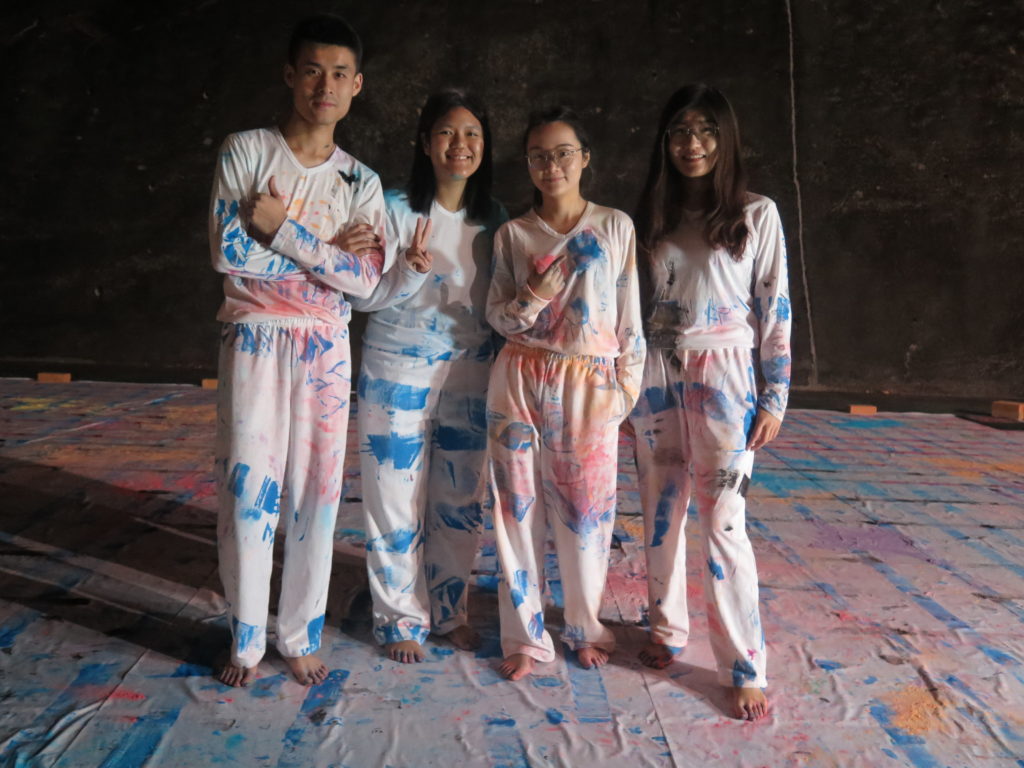For the third and last phase of this year’s programme, individual portraits of the current groups are published in order to give a glimpse into the day-to-day collaborations, convey the intensity of the work process and sketch the interplay between the individual and the collective. Today we present a conversation about the work of Yuanyang Bao (visual communication design), Peitao Chen (visual communication design), Wen Qing Kwek (fine arts/painting), Xiaoli Liu (intermedia art/curation) the result of which was presented in the final group exhibition 说了/ 没说 : SPOKEN / UNSPOKEN on the 24th November 2018.
For your third project you all went into a completely new artistic medium: performance. I would like to know more about how it felt for you expand your own fields and how you went about it. Kwek: It was indeed very different and I learnt a lot from the process. We basically started off from zero. As we all have a rather visual background we’re used to planning. But with performance, we realised, it’s helpful to plan less and rehearse more. Find out by way of testing things whether an idea works or not. Because of our inexperience with the medium, we kept the concept very minimal and tried to capture the essence of what a performance is. Bao: Yes, it was very different from doing a design installation which feels much easier and more familiar. But with performance you can attract people better and create more of an experience. Liu: For me the artistic medium is not so important. Like the others have said: we were familiar with installation. So in the beginning, we embarked very rapidly on developing the idea, conducting interviews with the public, collecting and selecting material. But after all of this we wondered: how can we combine all of our stories? That’s when we came up with working with our own bodies. Once we’d taken this decision, all of us contributed a lot to the new idea and I enjoyed our hard work. Gradually, we realised that we could let go of much of the material we had collected up until then and reduce it to the performance itself. Sometimes the precise is the more powerful. The result was a durational performance. Almost two and a half hours long. Kwek: (laughing) It turned out to be a lot longer than we’d expected.
In the feedback round Peitao Chen (who wasn’t able to join the interview) mentioned that to him, the performative work was still a design. What did he mean by this? Bao: Chen and I are trained designers. So we learned to think in a design-based way. In that sense, we felt like we designed the performance and it was also aesthetically informed by our graphic design. For example the minimalism: we are used to think that less is better and we integrated that in our performance. At the end of the day, design is a mode of thinking and a way of problem-solving.
How did you feel about working with the body so intensely? Bao: I enjoyed the focus on the body. The repetitive cycles, patterns and actions gave me the feeling that during those two and a half hours I didn’t need to think of anything else. That way, I found myself calming down and focusing only on my hand. Even the Hong Kong noise seemed to disappear and I heard the breeze and the birds. As everything felt so quiet, I was able to hear a lot of subtle sounds. Liu: Yes, the focus on the body was a kind of meditation. We didn’t think of anything, painted the lines and walked as if meditating. But of course, each performance was a very different experience. Wen Qing: At first I struggled with the visual outcome. As you know, the visual concept is usually very important for us. At first we couldn’t really find meaning in what we were doing because it’s not exactly a product that is nice to be shown. This work was much more about process. The mind and the soul had to be very, very concentrated. It didn’t feel like such a long time though. In fact, I found it very, very relaxing and was enjoying every single moment.
Your work was called A City in Transit and you addressed memory in the urban setting. What were your conceptual intentions? Kwek: Our intention was to start with a blank canvas with every line drawn onto it being like a mark in time. Also, some of the strokes and their colours merged so it was also about how certain memories get influenced and changed by new ones. The footprints were representative of people in a particular city leaving marks. It was about constructing memories in a place and then observing how they evolve. In our interviews we had asked people about Hong Kong’s past and transformations. From there we condensed everything to the concept of memory. But most of all, we focused on the performance and left it open how different people would differently interpret what they experienced. Some people felt it was about time, some thought it was about meditation. It’s good that people have different interpretations. Liu: It’s important that the public can have different experiences. On our canvas some things appear, disappear and reappear. By addressing memory we are not just talking about going back to or reliving the past, but about the dynamic process that memory is and that the city is. The performance meant to illustrate this. Bao: Moreover, we thought about how some disappearing phenomena made way for something new.
How did you deal with difficulties during the group work? Bao: The nervousness about doing a performance for the first time was affecting us, so we got a bit stressed. On the other hand, we were four people, all invested in making this project work. And that was a very good experience. Kwek: What was also challenging were certain misunderstandings during the mentoring. Sometimes we went home and had four different interpretations of the feedback we got. Then we just spend a lot of time with finding common ground. Liu: The most important characteristic of our group is that we never give up. Even though we are very different persons, have different tempers and so on. But as there was a lot of mutual respect and a lot of communication we managed to tackle and overcome our difficulties. We always aimed at maintaining a harmonious relationship. This was really important to us. Bao: Yes, our unity was very powerful.
So far, how would you say has the TC programme in general or the group work specifically impacted you or your work? Liu: The first thing that comes to mind, is that I learned how to deal with relationships among team members and how to deal with different backgrounds. You have to be careful to listen and try to understand what they’re saying. A second learning for me is culture-based: The relationship between teacher and student is culturally very different between China and Western countries. Chinese students are often very careful not to offend anybody even though there are things they might want to express. In that sense, I am very inspired to take the time and seek the discussion with teachers. To achieve that, we need to move beyond the inner borders. Bao: I’d say for me, it’s how to balance other people’s with your own ideas. Inquire into why other people think the way they do. If you do that, you might understand ideas that differ from yours. This balance is very important. I enjoy listening to other people’s ideas. Kwek: Yes, for me as well it’s how to put myself in someone else’s shoes. Sometimes I might want to convey a certain concept or thought. But some details might not always be equally important to the people that come from other disciplines. When I’m really trying to consider the way the other person thinks in, it helps me to rephrase my question and transmit my ideas in a way they understand. Adjusting your words to someone’s temper, sensitivity or way of working and thinking can improve communication a lot. „Why are you asking this? Why do you think this way? Why do you understand a certain situation the way you do?“—those kind of questions. In that regard, I learned the most in this third and final project. We struggled all the way but struggles are important for you to grow!

